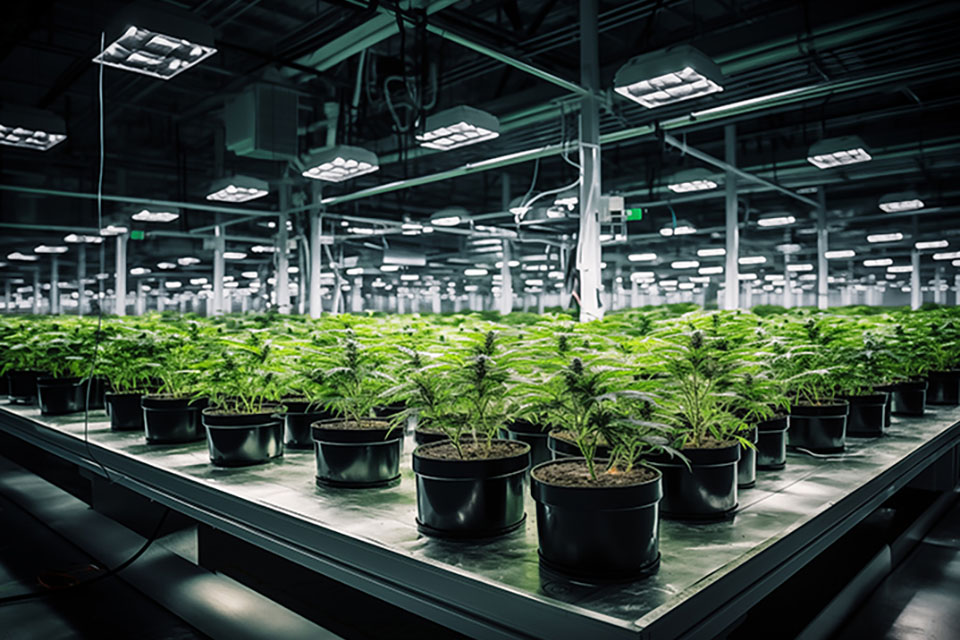
Growing cannabis at home is an exciting journey, whether you're a novice or an experienced cultivator. One of the most crucial stages in this journey is knowing when to switch your cannabis plants from the vegetative stage to the flowering stage. This guide will walk you through the process, ensuring you achieve the best results with your Kind Seed Co seeds.


Understanding the Vegetative and Flowering Stages
Cannabis plants go through several stages of growth, with the vegetative and flowering stages being the most critical.
- Vegetative Stage: This is the growth phase where your plant focuses on developing strong stems, leaves, and roots. It's all about building a solid foundation. During this stage, your plants require more nitrogen to support foliage growth.
- Flowering Stage: This phase is where your plant starts to produce buds, the part of the plant that contains the cannabinoids and terpenes desired for consumption. It's characterized by the need for more phosphorus and potassium to support bud development.
When to Make the Switch
The timing to switch your cannabis plants from vegetative to flowering depends on several factors:
1. Plant Size and Space Constraints:
Indoors: If you're growing indoors, you need to consider the size of your grow space. Cannabis plants typically double in height during the flowering stage, so switch to flowering when your plants are about half the desired final height. This ensures they have enough room to grow without becoming too cramped, which can lead to light and air circulation issues.
Outdoors: Outdoor growers should plan the switch based on the natural light cycle, usually around late summer when daylight hours decrease. Monitoring your local daylight patterns can help you determine the right time.
2. Strain Characteristics:
Different cannabis strains have varied growth patterns. Sativas, for example, grow taller and may need to switch earlier, while indicas stay shorter and can afford more vegetative time. Hybrid strains might exhibit characteristics of both, so understanding your specific strain is crucial.
3. Plant Health:
Ensure your plants are healthy before making the switch. Any stress, pests, or nutrient deficiencies should be addressed during the vegetative stage to avoid issues during flowering. A healthy plant will transition more smoothly and produce better yields.
How to Switch from Vegetative to Flowering
To switch your cannabis plants from vegetative to flowering, you need to alter the light cycle. Here's how to do it:
1. Adjust the Light Schedule:
Indoors: Change the light schedule to 12 hours of light and 12 hours of darkness. This mimics the natural shortening of days and triggers the flowering process. Consistent light cycles are crucial; any interruptions can cause stress and potentially lead to hermaphroditism.
Outdoors: The switch occurs naturally with the seasonal change. Ensure your plants are ready by monitoring local daylight patterns. As the days shorten, your plants will naturally transition to the flowering stage.
2. Maintain Proper Conditions:
Temperature: Keep a stable temperature between 65-80°F (18-26°C). Fluctuations outside this range can stress the plants, affecting bud development.
Humidity: Lower humidity levels to around 40-50% to prevent mold and mildew. During the flowering stage, plants are more susceptible to these issues, so maintaining optimal humidity is essential.
3. Nutrient Transition:
Switch to flowering nutrients, which are higher in phosphorus and potassium to support bud development. Reducing nitrogen levels helps the plant focus energy on bud production rather than foliage growth.
Tips for a Successful Transition
1. Monitor Plant Growth:
Keep an eye on your plants during the transition. Look for signs of stress or deficiencies and address them promptly. Healthy plants will show vigorous bud development and fewer issues with pests or diseases.
2. Pruning and Training:
Use techniques like topping, low-stress training (LST), or the Screen of Green (ScrOG) method to manage plant height and maximize light exposure. These methods help ensure that all parts of the plant receive adequate light, leading to better yields.
3. Patience and Observation:
The flowering stage requires patience. Buds will develop over several weeks, and it's crucial to avoid rushing the process. Allow the plants to mature fully to achieve the best potency and flavor.
4. Environmental Control:
Ensure your grow space has adequate ventilation. Good air circulation helps prevent mold and pests, which can be particularly problematic during the dense flowering stage.
Common Mistakes to Avoid
1. Switching Too Early:
Don't rush into flowering before your plants are ready. Ensure they have a strong root system and are healthy enough to support bud growth. Premature switching can result in smaller yields and less potent buds.
2. Ignoring Light Leaks:
Light leaks during the dark period can stress your plants and disrupt the flowering process. Ensure complete darkness during the 12-hour dark cycle. Even small amounts of light can confuse the plants and revert them to the vegetative stage.
3. Overfeeding or Underfeeding:
Nutrient imbalances can affect bud development. Follow a balanced feeding schedule appropriate for the flowering stage. Overfeeding can lead to nutrient burn, while underfeeding can result in deficiencies.
4. Poor Pest and Disease Management:
Regularly inspect your plants for signs of pests or diseases. Address issues promptly to prevent them from spreading and affecting your yield. Organic pesticides and beneficial insects can help manage pests without harming your plants.
Additional Considerations
1. Choosing the Right Strain:
Some strains are more forgiving and easier to grow, making them ideal for beginners. Research strains known for their robustness and high yield to match your growing experience and conditions.
2. Watering Practices:
Proper watering is crucial during the flowering stage. Overwatering can lead to root rot, while underwatering can stress the plant. Use the "lift the pot" method to gauge when your plants need water—pots should feel lighter when watering is necessary.
3. Harvest Timing:
Knowing when to harvest is just as important as knowing when to switch to flowering. Harvesting too early can result in lower potency, while harvesting too late can degrade the quality of the buds. Look for signs such as the color of the trichomes and pistils to determine the optimal harvest time.
4. Curing Process:
After harvesting, properly curing your buds enhances their potency, flavor, and overall quality. Store buds in airtight glass jars in a cool, dark place, and burp them daily to release excess moisture and promote even curing.
5. Record Keeping:
Keep detailed records of your grow, including dates of switching, feeding schedules, and any issues encountered. This information can be invaluable for future grows and for troubleshooting problems.
Conclusion
Switching your cannabis plants from the vegetative to the flowering stage is a critical step in the cultivation process. By understanding the right timing, adjusting conditions appropriately, and avoiding common mistakes, you can ensure a bountiful harvest of high-quality buds. Trust in Kind Seed Co for all your cannabis seed needs and embark on your growing journey with confidence.
Ready to take your cannabis growing to the next level? Explore our extensive selection of premium cannabis seeds at Kind Seed Co. and start your journey towards a successful harvest. Visit our website today and discover the best seeds for your grow.






